Explore the world's most remote towns
The most isolated places on Earth
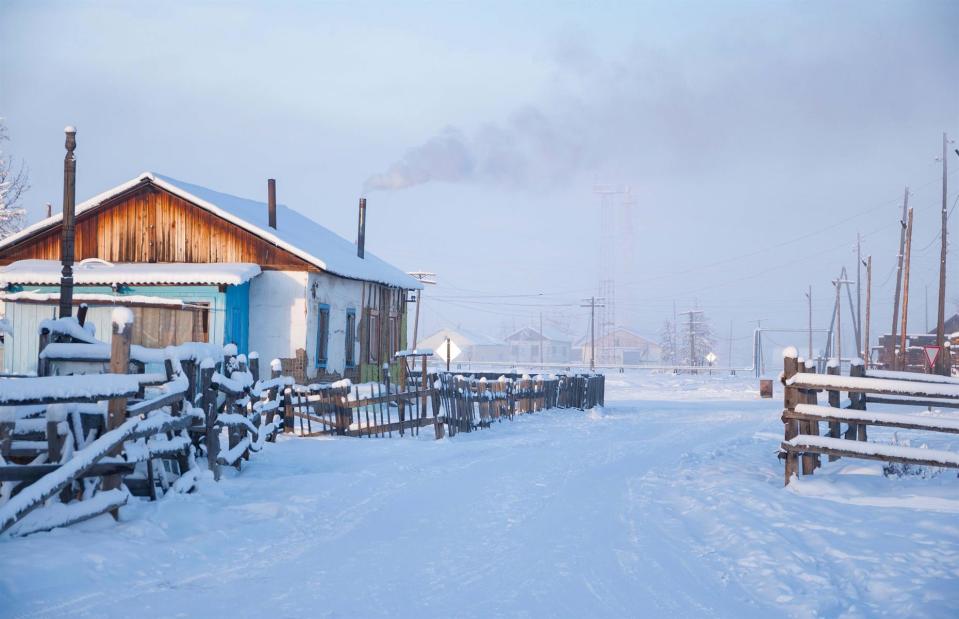
Piu_Piu / Shutterstock
Have you ever thought about escaping the rat race and riding it out in one of the most remote places in the world? From the highest settlement on Earth to the coldest, some people spend their entire lives detached from the mainland.
Read on to take a look at the measures they take to survive in the most remote of locations.
Whittier, Alaska, USA
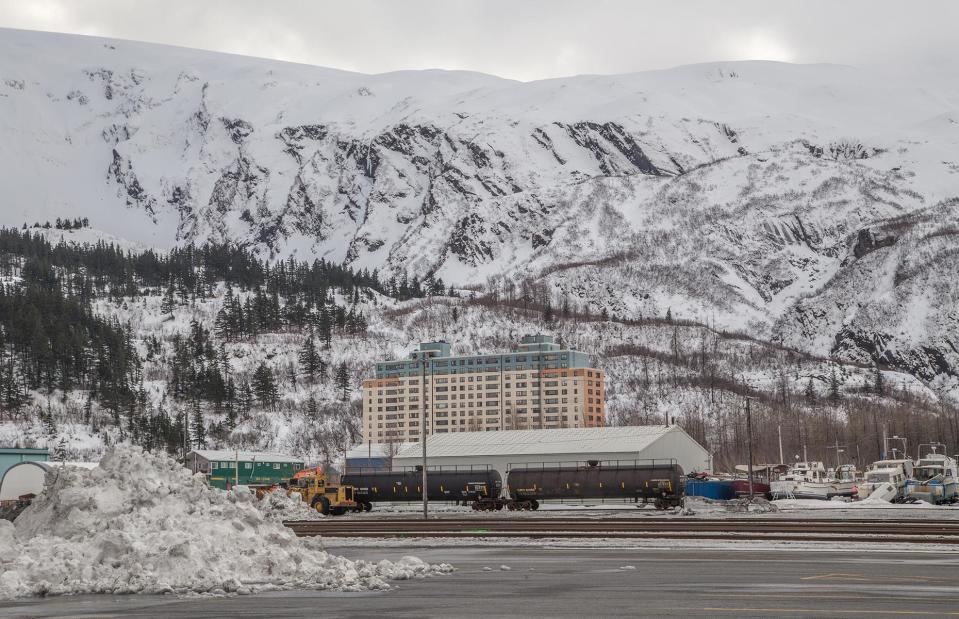
Jenny Bailey / Alamy Stock Photo
Welcome to Whittier, a tiny Alaskan town on the far side of the Prince William Sound, nestled in the shadow of wintry mountains. However, unlike many small towns in remote locales which offer a conventional cluster of buildings, both residential and commercial, Whittier offers a truly remarkable alternative nearly all of its roughly 200 residents live under one roof.
Whittier, Alaska, USA
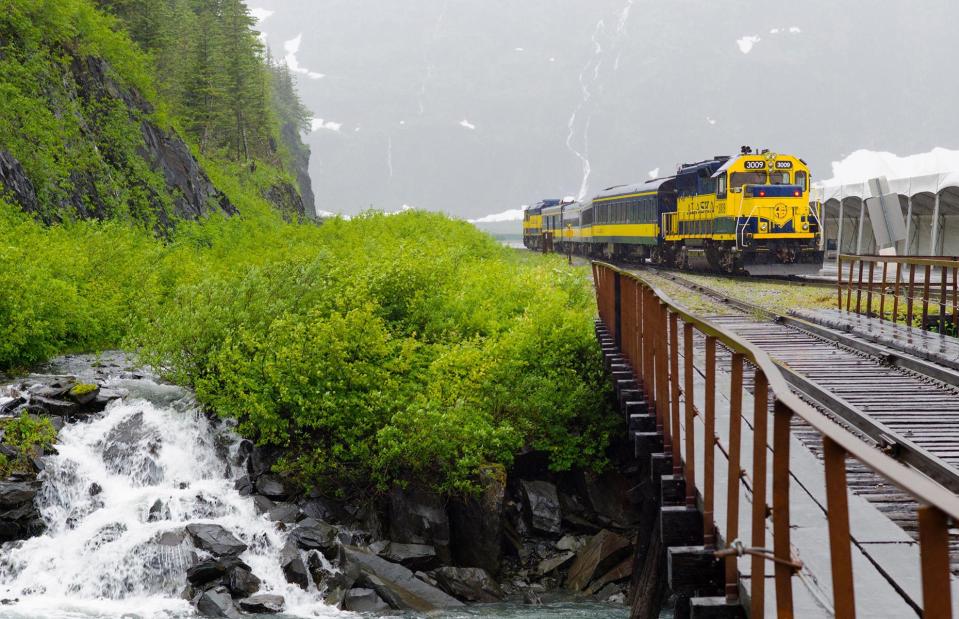
H. Mark Weidman Photography / Alamy Stock Photo
Whittier can only be accessed by a single-lane tunnel through the mountains, which cars can only pass through once an hour in either direction, forcing residents to organise their lives around the tunnel’s timetable.
Moreover, the town effectively has a curfew, since the tunnel closes at 22:30, and if you miss the last entry, you’ll find yourself sleeping in your car – a not uncommon occurrence. According to CNN, many of the town’s residents own shirts which read POW, or ‘Prisoner of Whittier.’
Whittier, Alaska, USA
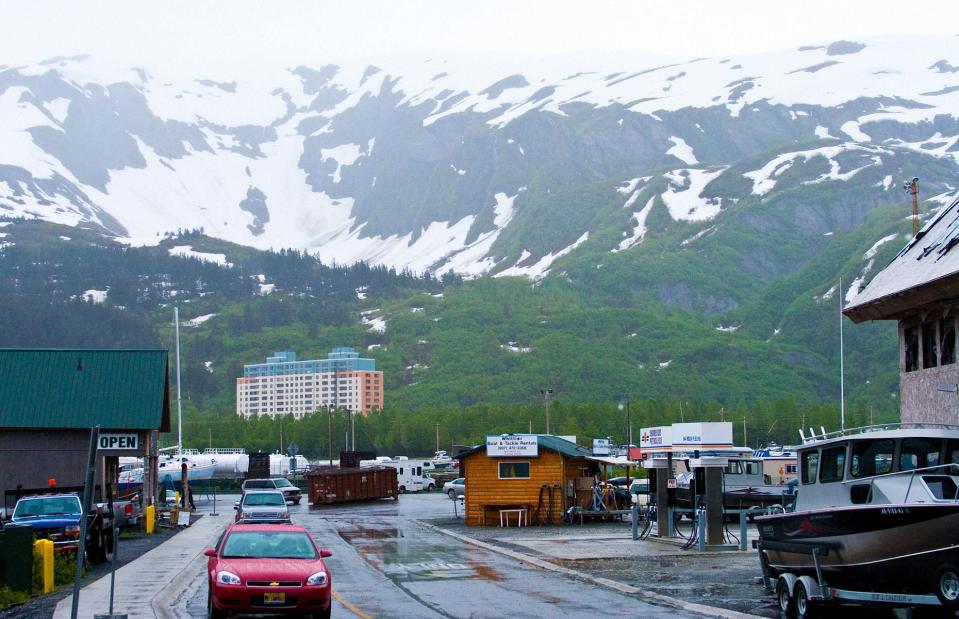
Edward M. Wylonis Jr. / Alamy Stock Photo
However, while isolated, Whittier offers residents everything they need, not just contained in one town, but in one building. The 14-storey Begich Towers Incorporated, known locally simply as the BTI, may seem like a bit of a blot on the winter wonderland-eque landscape, but reportedly almost all of the 200-odd Whittierites, it’s home… as well as the local hospital, school, police station, grocery store, church, post office and city council headquarters!
Inside the BTI – a former Cold War-era army barracks, which now resembles an ageing brutalist hotel – residents seem to enjoy the sense of community facilitated by living under the same roof. “We’re all family here,” they claim.
Whittier, Alaska, USA
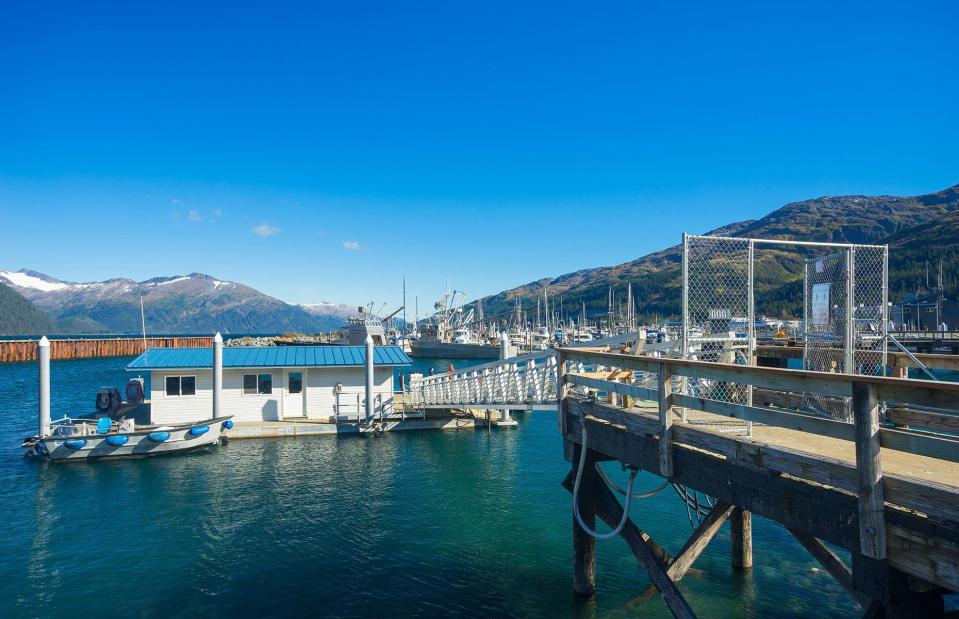
robertharding / Alamy Stock Photo
What's more, given the inhospitable conditions outside most of the year, it’s just as well that residents feel this way. In the true dead of winter, leaving Whittier becomes nigh on impossible, only feasible by train, weather permitting. While the surrounding scenery may be worthy of a National Geographic shoot, it’s generally best enjoyed from inside the BTI.
Coober Pedy, Australian Outback, Australia
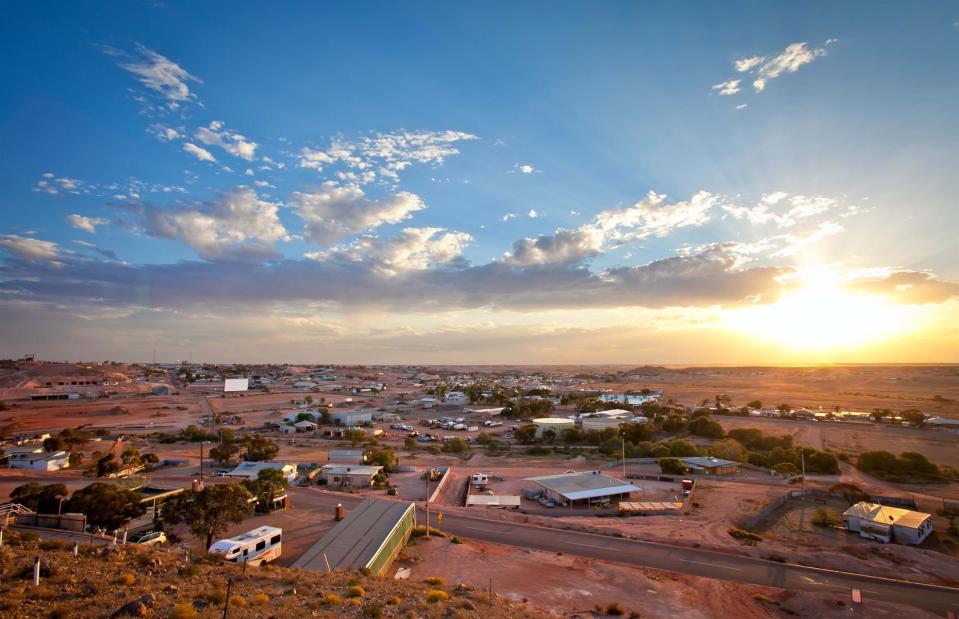
VEK Australia / Shutterstock
Located 526 miles north of Adelaide, in the Australian Outback, one of the most hostile places on Earth, is the town of Coober Pedy. With over 4,000 hours of sunshine a year and barely any rain, this otherworldly landscape is known for opal mining.
At the height of Australian summer, the temperature in Coober Pedy swings between 25.3°C (77.5°F) and 36.7°C (98.1°F). With record highs of 47°C (117°F), it's not surprising that half of the town's 1,942 inhabitants choose to live underground. In May 2023, 11 incredible homes were auctioned off by the town, due to previous tenants not paying council rates.
Coober Pedy, Australian Outback, Australia
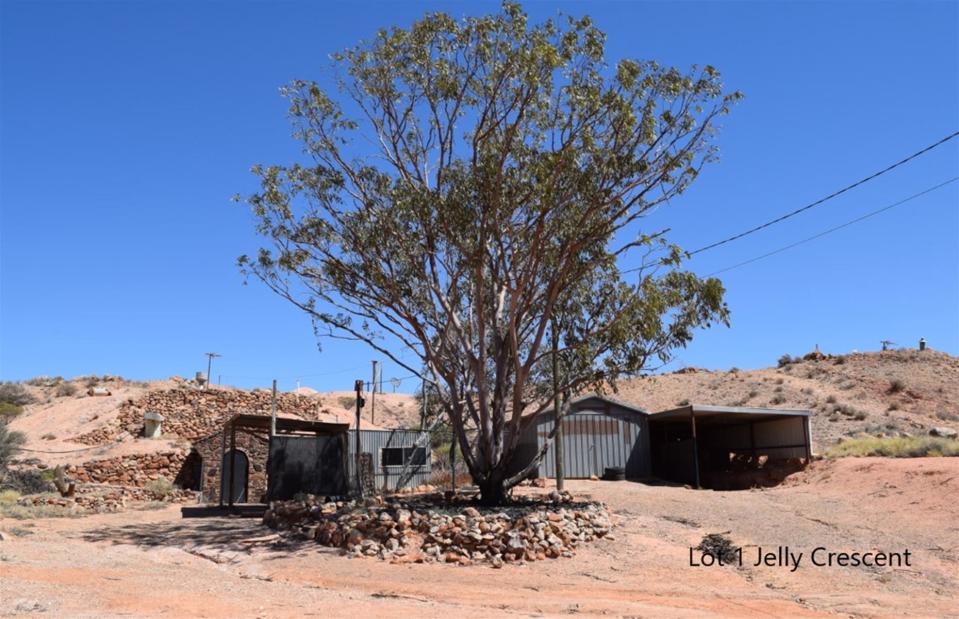
Andrews Property
Warren Andrews, director of Andrews Property, told The Sun that some of the bills dated back three years. He added that some of the properties that were up for auction were still in good condition, while others needed a lot of work.
As a result, bidding opened at just £2,634 ($3.3k / AU$5.1k) on the cheapest lot and by the time the auction was over, all the properties had sold, with buyers snapping up bargains for as little as £8,418 ($10.6k / AU$16.3k). This Jelly Crescent home, which was bought by one lucky bidder, is typical of the area, with corrugated metal structures above ground and the main house below.
Coober Pedy, Australian Outback, Australia
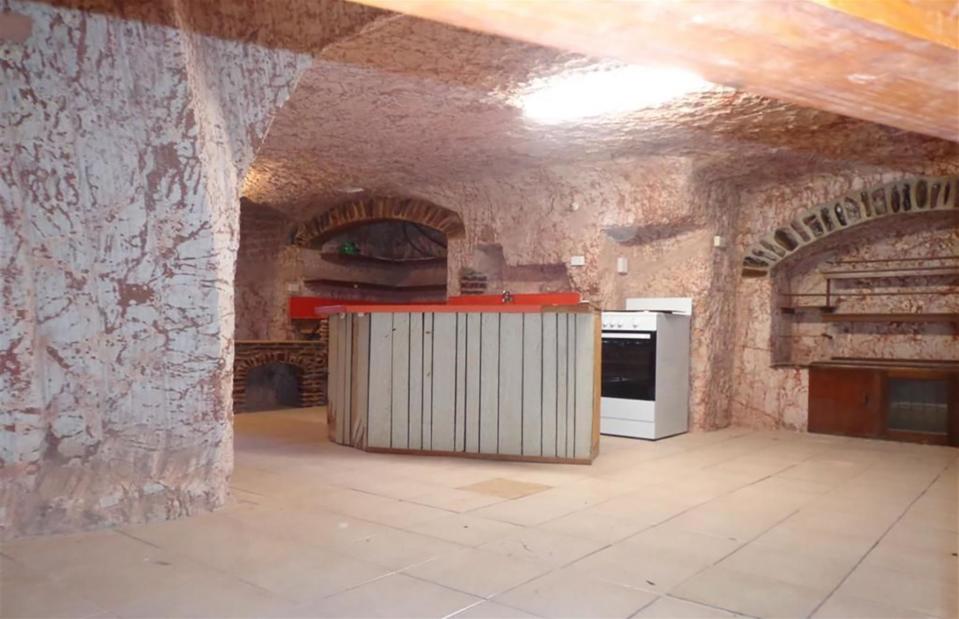
domain.co.au
Although the listing didn't contain any recent interior photos, this image of the kitchen at Jelly Crescent from 2017 gives a good idea of what to expect from cave living. The tiled floors, uneven, distinctive walls and low ceilings are typical of homes in Coober Pedy.
No matter how harsh the climate, the underground homes maintain a comfortable temperature all year round, with an estimated 50% of the locals living below the surface.
Coober Pedy, Australian Outback, Australia
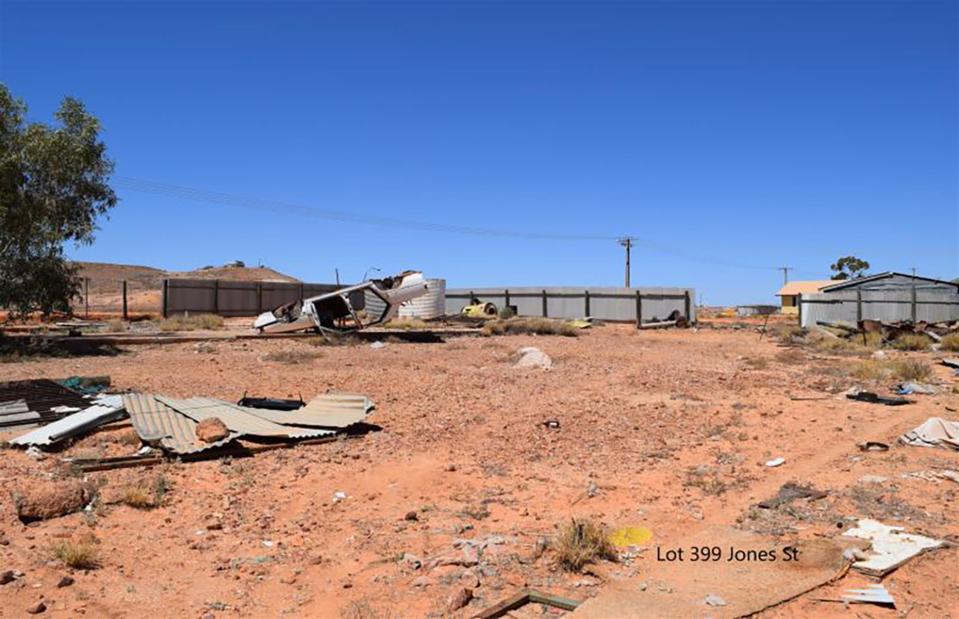
Andrews Property
Due to their circumstances, the properties went for a song. This 8,600-square-foot empty residential plot on Jones Street was the cheapest property up for grabs. Meanwhile, a number of three-bedroom family homes were available for starting bids of £15,500 to £288,200 ($19.5k–$363k or AU$30k–AU$558k).
Despite some of the properties selling for less than the council had hoped, a spokesperson told 7 News that the total recouped from the auction was AU$504,000, which is around £260,300 ($328k) and "all the outstanding rates were recovered."
Supai, Arizona, USA
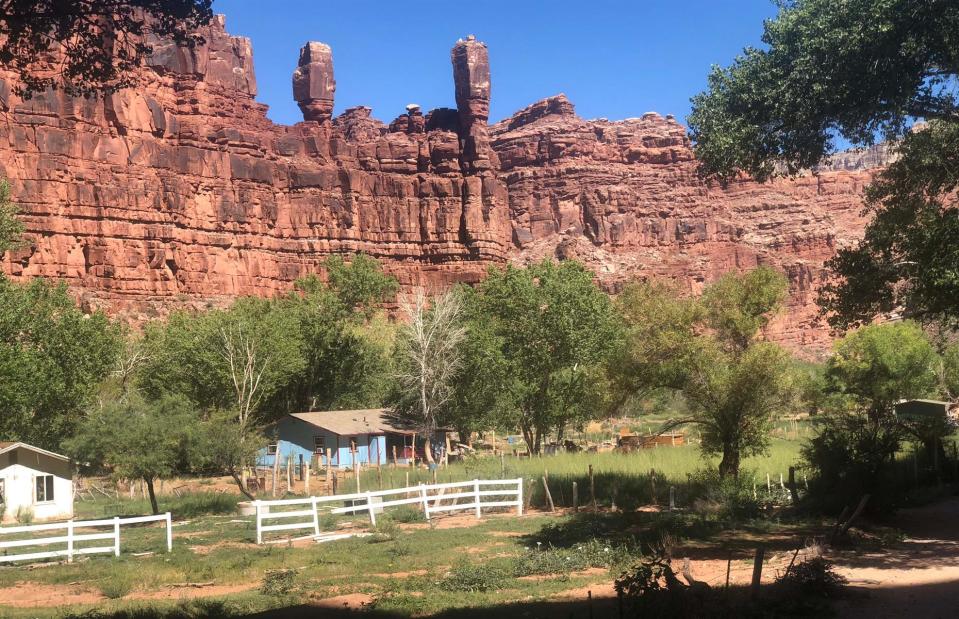
Sarah K. Webster / Shutterstock
Often referred to as the most remote community in the lower 48 states, the secluded community of Supai is located within the Grand Canyon in an area known as Havasu Canyon. Only accessible by helicopter, mule or on foot, it sits eight miles from the nearest road and feels like extreme living at the end of the Earth.
Supai, Arizona, USA
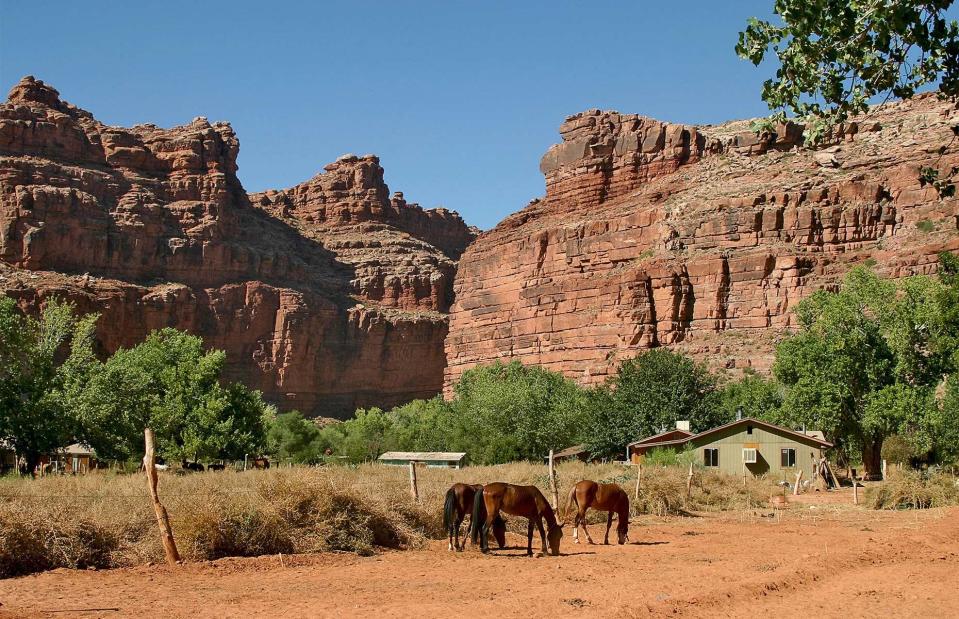
Yvette Cardozo / Alamy Stock Photo
Inhabited by the Havasupai Native American tribe, who have lived in the village for the last 800 years, they survive in the arid, solitary landscape by irrigation farming in the summer and hunting animals. The turquoise waterfalls and springs provide them with a constant water source.
Supai, Arizona, USA
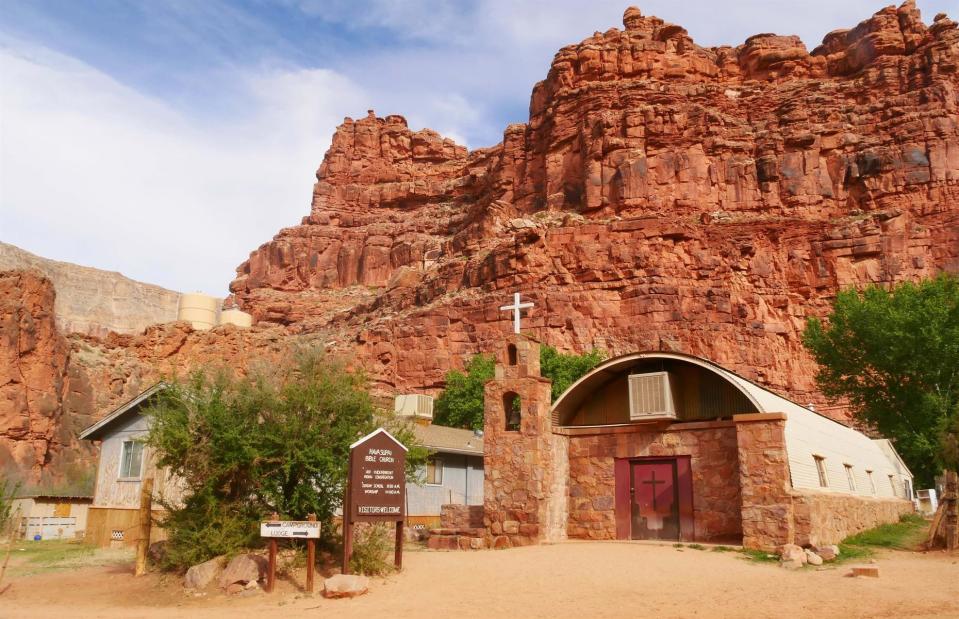
joojoon27 / Shutterstock
Spread over 188,000 acres of land, the canyon is prone to flash floods but still attracts more than 20,000 visitors a year. With a school, store and a small church, the village offers some amenities for the locals.
Supai, Arizona, USA
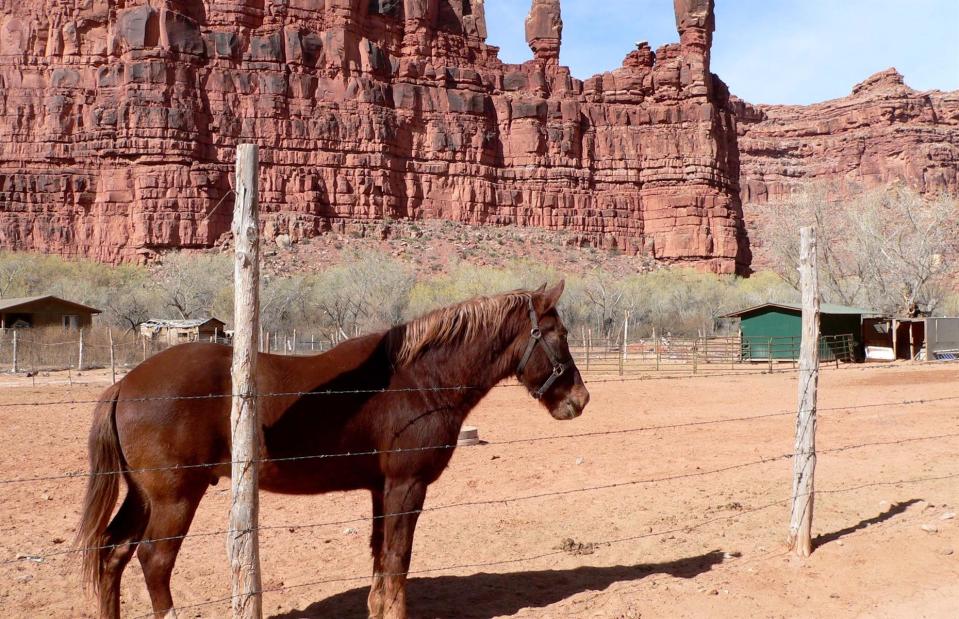
SHoener / Shutterstock
To this day, the village is the only place in the US that receives their mail and parcels by mule. A series of linked donkeys carry the packages along the eight-mile trail to the village regularly to the small population.
In October 2022, the remote village was devastated by flooding which "destroyed several bridges and trails that are needed not only for our tourists, but for the everyday movement of goods and services into the Supai Village," the tribe said. Looking on the bright side, however, there have also been positive reports of "flourishing flora and fauna and new waterfall flows" in the area.
Tristan da Cunha, Saint Helena
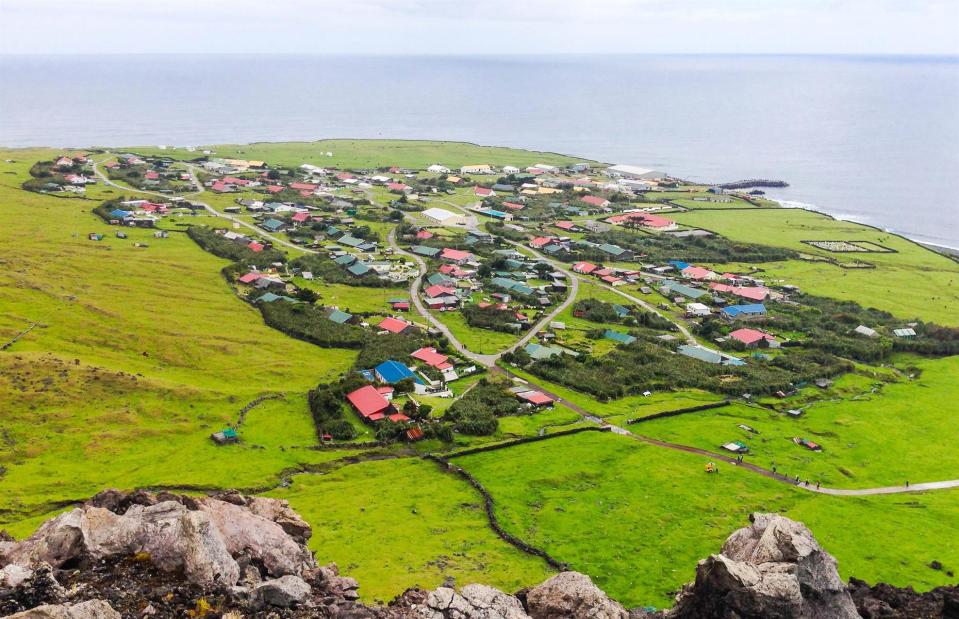
maloff / Shutterstock
The world's most remote populated island, Tristan da Cunha sits in the middle of the Atlantic Ocean. 1,750 miles from Cape Town, Edinburgh of the Seven Seas, the only settlement on the island, is home to around 239 permanent residents.
Tristan da Cunha, Saint Helena
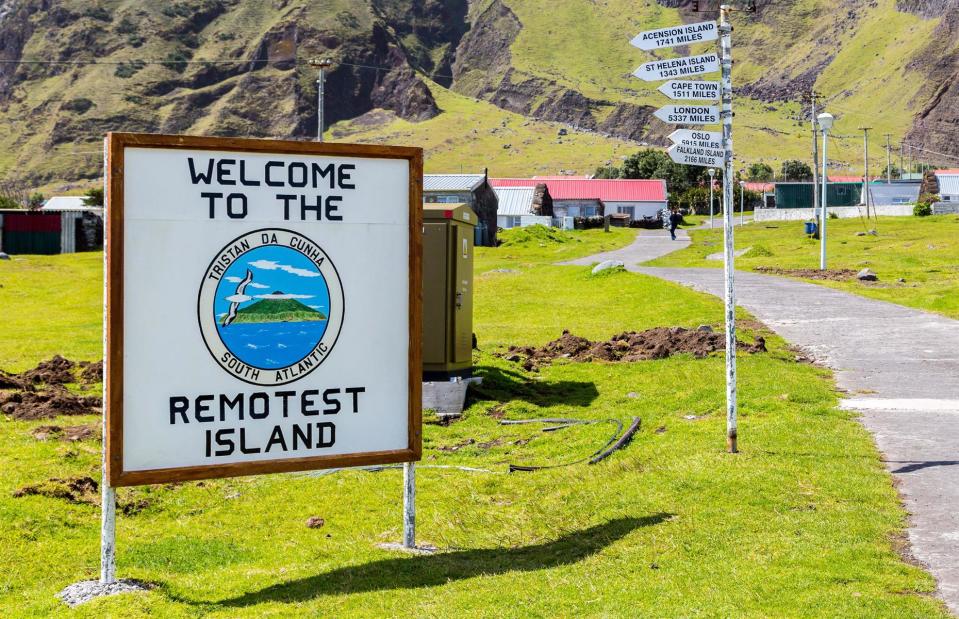
maloff / Shutterstock
Even though the island has a harbour, any large yachts or vessels have to anchor a distance from the coast. Local ferries operate as frequently as they can to and from the island, but with the weather only good enough 70 days a year, reaching the extreme location where people live is difficult.
Tristan da Cunha, Saint Helena
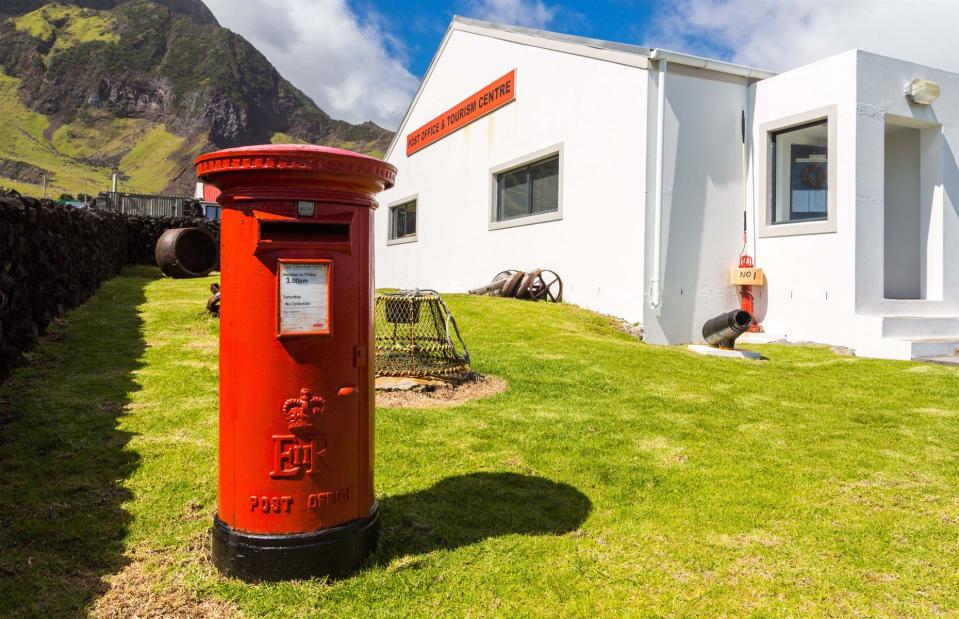
maloff / Shutterstock
All the residents have access to modern-day amenities including a hospital that offers dental treatment and minor operations, as well as a grocery shop and post office, where the island produces its very own stamps.
Tristan da Cunha, Saint Helena
![<p>Brian Gratwicke / Flickr [CC-BY-2.0]</p>](https://s.yimg.com/ny/api/res/1.2/jw6I.fkUPlOJOB0adc93yw--/YXBwaWQ9aGlnaGxhbmRlcjt3PTk2MDtoPTYxOQ--/https://media.zenfs.com/en/loveproperty_uk_165/29aa9d8ad1d42b444093d73e61f5bb73)
Brian Gratwicke / Flickr [CC-BY-2.0]
Open Monday to Friday, the local supermarket provides essential produce for the villagers. However, goods need to be ordered months in advance of the arrival of the incoming ships so many islanders grow their own crops and rear livestock so as not to rely on the supermarket.
Utqiagvik, Alaska, USA
![<p>Unknown author / Wikimedia Commons [CC BY-SA 2.5]</p>](https://s.yimg.com/ny/api/res/1.2/TFlQDRppJvIgbNwys09LYw--/YXBwaWQ9aGlnaGxhbmRlcjt3PTk2MDtoPTYxOQ--/https://media.zenfs.com/en/loveproperty_uk_165/50206e41c686e8be45dfb461d9a93090)
Unknown author / Wikimedia Commons [CC BY-SA 2.5]
The northernmost community in the United States, Utqiagvik feels completely cut off from the world. With no roads connecting it to other settlements, the dirt roads that do exist lead just a few miles outside the main town.
Utqiagvik, Alaska, USA
![<p>Andrei / Wikimedia Commons [CC BY 2.0]</p>](https://s.yimg.com/ny/api/res/1.2/2FsPuxWVa_QoRZwnBttwXA--/YXBwaWQ9aGlnaGxhbmRlcjt3PTk2MDtoPTYxOQ--/https://media.zenfs.com/en/loveproperty_uk_165/6e8635696d9e02a1d097d56103f3aed2)
Andrei / Wikimedia Commons [CC BY 2.0]
The city is built upon a layer of permafrost that's up to 1,300 feet deep in some places, making life hard for the permanent population of just under 4,500 residents. The warm season has an average high of just 2°C (35.6°F) and the winter lasts for 160 days a year, with more than two months spent in complete darkness.
Utqiagvik, Alaska, USA
![<p>Cromagnon / Wikipedia Commons [CC BY-SA 2.5]</p>](https://s.yimg.com/ny/api/res/1.2/AqN8VvqSzwFz4iMBfQVSJQ--/YXBwaWQ9aGlnaGxhbmRlcjt3PTk2MDtoPTYxOQ--/https://media.zenfs.com/en/loveproperty_uk_165/93b67c559c0e94d1adee65d246bfa042)
Cromagnon / Wikipedia Commons [CC BY-SA 2.5]
Even though Utqiagvik is seen as a modern community, the locals still practice hunting, fishing and whaling to support the economy as well as for their own food. Only accessible by plane, the town has an airport which is the lifeline for any imports of vital supplies.
Utqiagvik, Alaska, USA
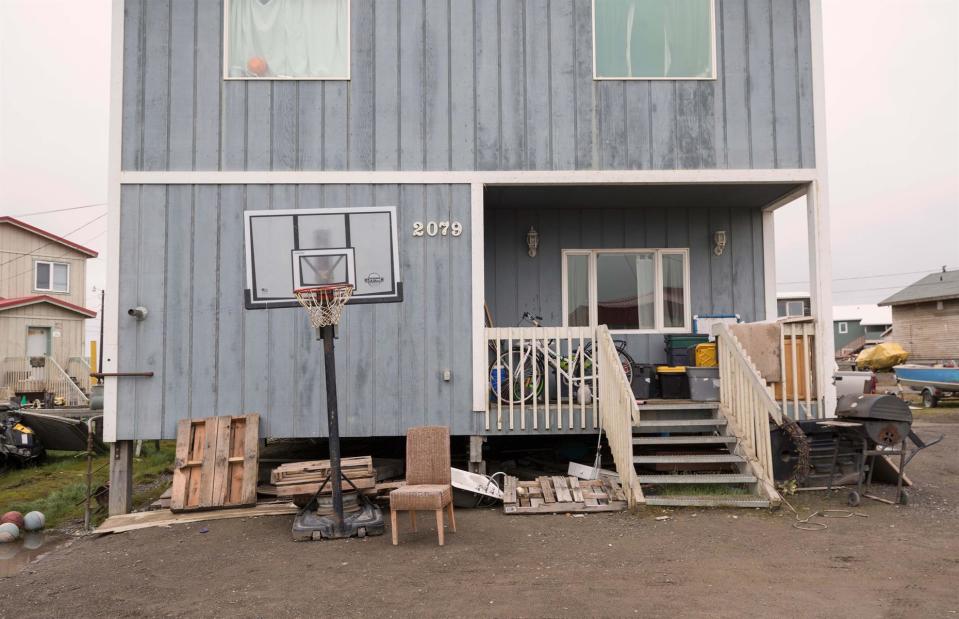
sunsinger / Shutterstock
Not completely cut off, the residents have a great quality of life. The homes are heated by natural gas from local oil fields and they have modern water and sewage systems. The town also has churches, various schools and a college as well as phone, internet, mail, radio and cable communications.
La Rinconada, Peru
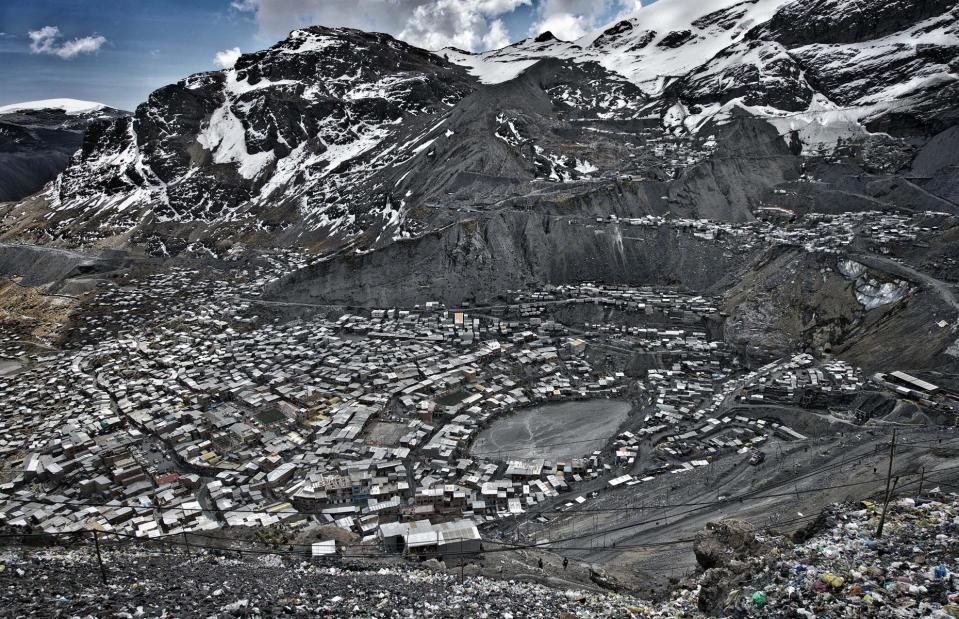
Oscar Espinosa / Sopa Images / Zuma Press / PA Images
At a height of over 16,000 feet, La Rinconada in Peru is the highest human habitation in the world. Perched atop Mount Ananea in the Peruvian Andes, the high-altitude homes are only accessible by a mountainside road and can take several days to reach.
La Rinconada, Peru
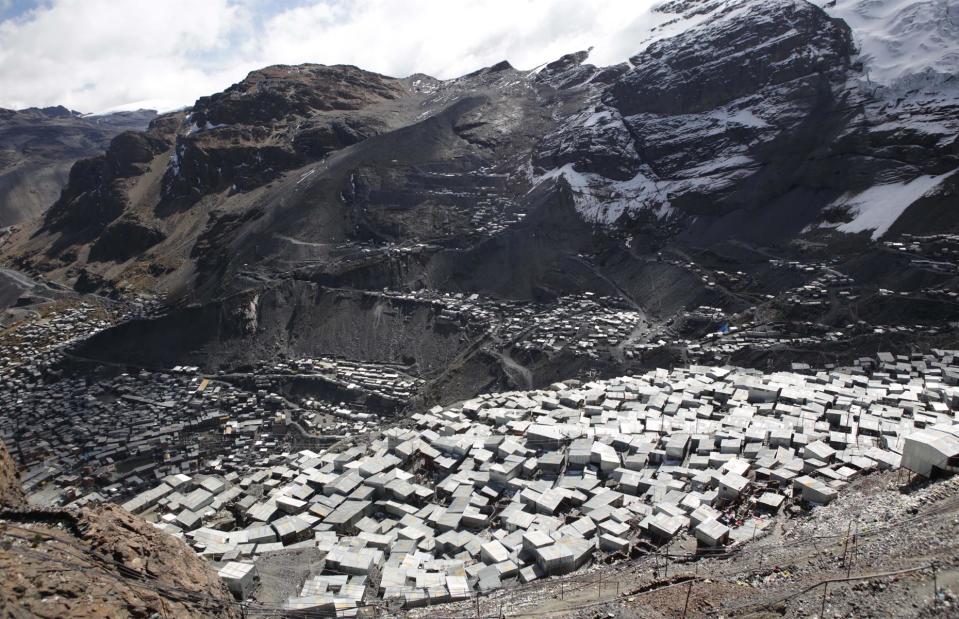
Marcin Osman / Shutterstock
Around 29,678 people call the town home, but with no basic modern amenities and little infrastructure as well as no sanitation system and no plumbing, it's not an easy life. Reportedly, residents suffer from discolouration of the lips and fingertips due to the body producing more red blood cells to compensate for a lack of oxygen.
La Rinconada, Peru
![<p>Hildegard Willer / Wikimedia Commons [CC BY-SA 4.0]</p>](https://s.yimg.com/ny/api/res/1.2/VhbSPwu3qCIfrWEHzht6Kg--/YXBwaWQ9aGlnaGxhbmRlcjt3PTk2MDtoPTYxOQ--/https://media.zenfs.com/en/loveproperty_uk_165/ab28a5a784e87668ff8bbd45c86c5d76)
Hildegard Willer / Wikimedia Commons [CC BY-SA 4.0]
The city itself is iced over for most days of the year and at such a height, the air is so thin that the residents have had to adapt. They've also had to find ways of entertaining themselves, which include meeting in cafés and setting up a local football team.
La Rinconada, Peru
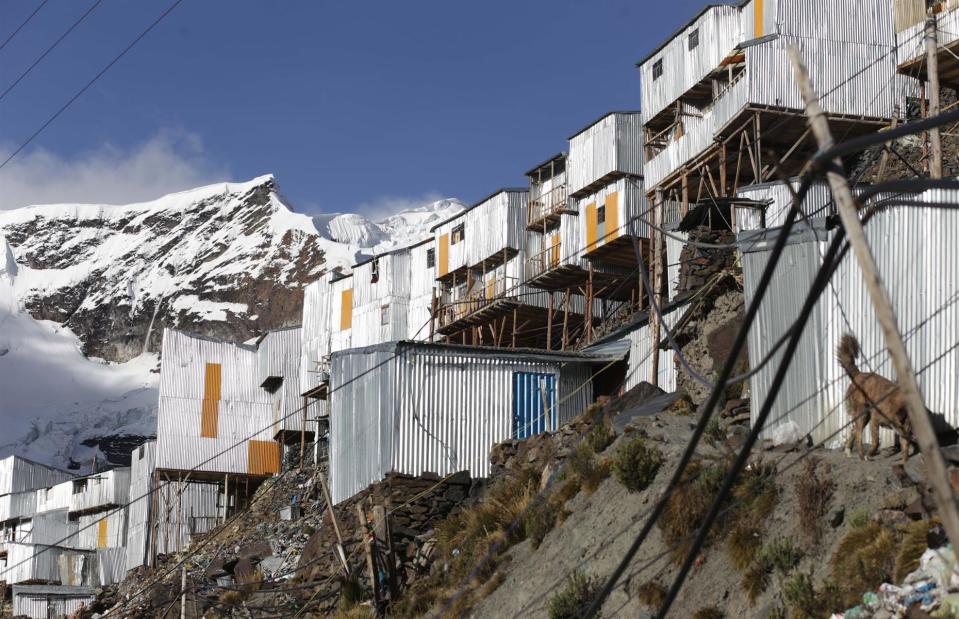
Marcin Osman / Shutterstock
Even though the town is extremely poor, the economy relies on the unregulated gold mines that are carved into the mountainside. Miners work for their contractors for around a month, then for themselves for around a week, when reportedly they are allowed to keep any gold they extract. However, there is no guarantee they will ever strike lucky!
Migingo Island, Lake Victoria, Africa
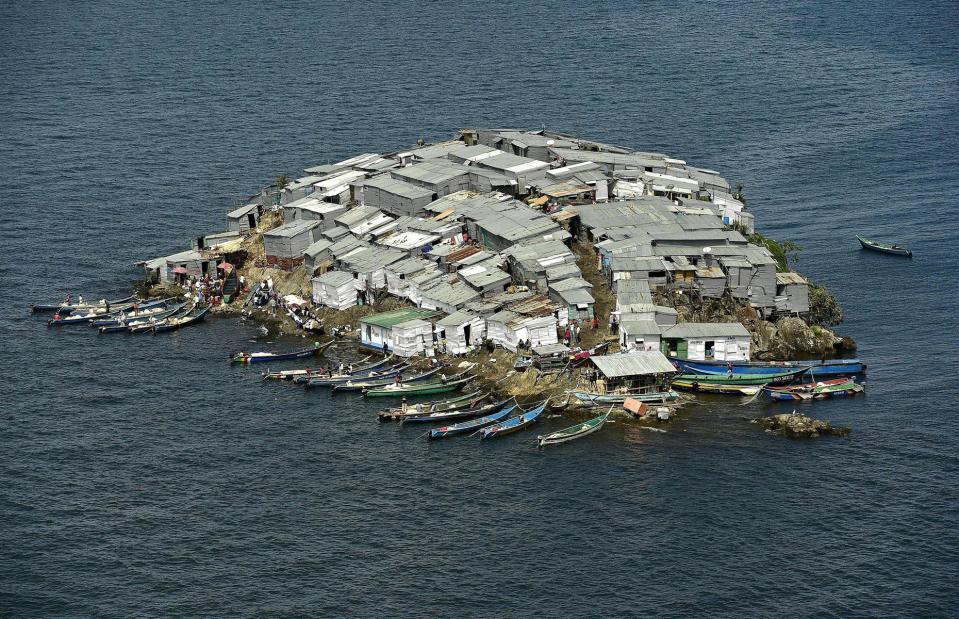
CARL DE SOUZA / Stringer / Getty
Lake Victoria is the largest lake in Africa and is home to one of the most isolated communities on Earth, Migingo Island. With a reported population of around 500 people, made up mostly of fishermen crammed into less than 22,000 square feet, the island is far from paradise. It is also at the centre of a territorial dispute between Kenya and Uganda.
Migingo Island, Lake Victoria, Africa
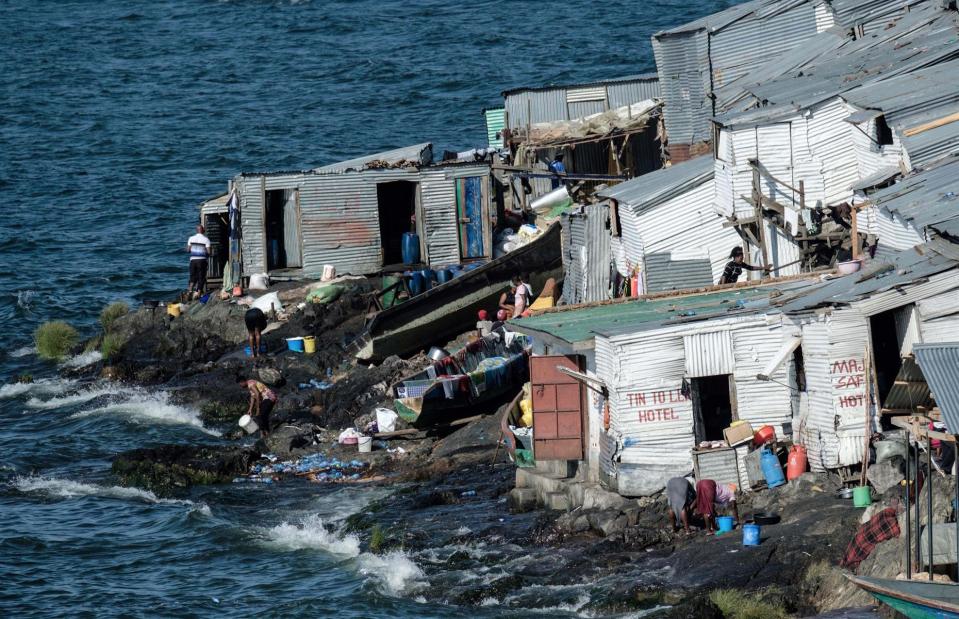
YASUYOSHI CHIBA / Contributor / Getty
Inaccessible to those without boats, the crowded island – about the size of half a football pitch is jam-packed with houses made from recovered tin and scavenged materials.
Migingo Island, Lake Victoria, Africa
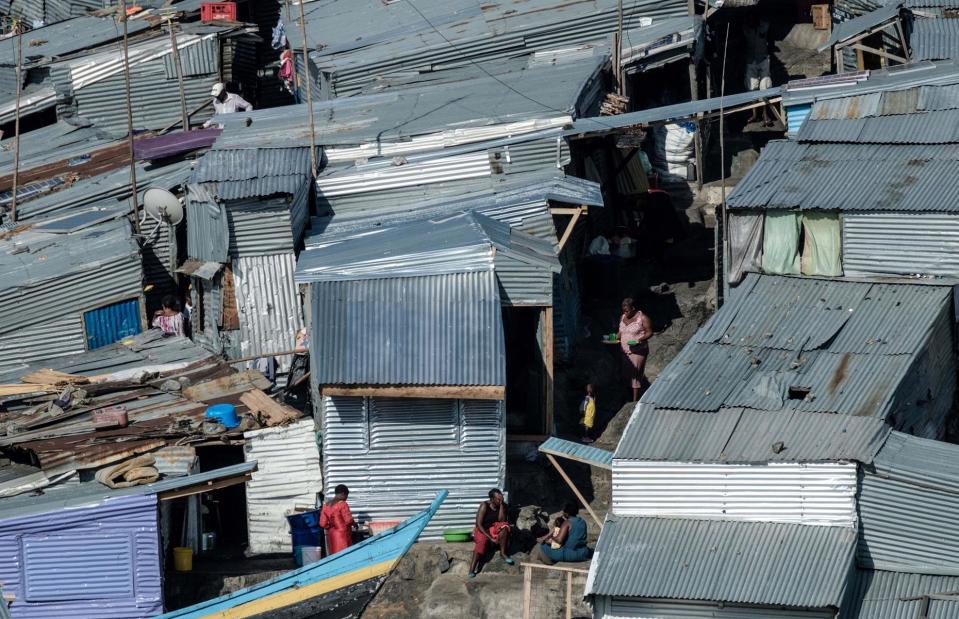
YASUYOSHI CHIBA / Contributor / Getty
However, islanders have made the best of life on the rocky outcrop and have built bars, hair salons and even a tiny port to make getting in and out of the island easier. A few of the residents have mobile phones so they can contact the outside world, but the signal is patchy at best.
Migingo Island, Lake Victoria, Africa
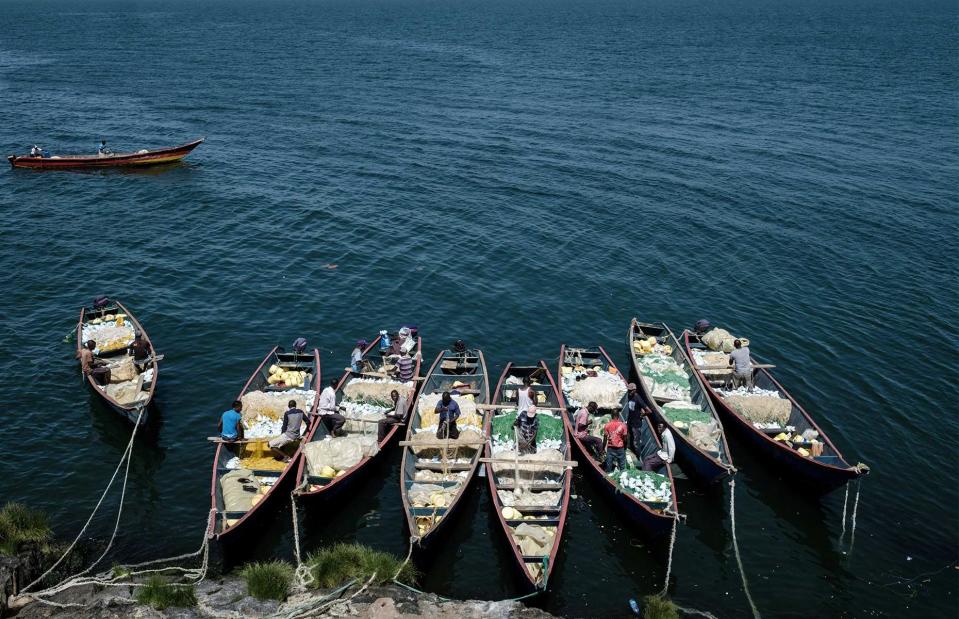
YASUYOSHI CHIBA / AFP via Getty Images
The residents made their way to the island because the surrounding deep water is home to large numbers of Nile perch, which provide income for the fishermen. Living directly on the island saves them fuel and also gives them easy access to wholesale buyers.
Villa Las Estrellas, Antarctica
![<p>SnowSwan / Wikimedia Commons [CC BY-SA 3.0]</p>](https://s.yimg.com/ny/api/res/1.2/F45a.jvkeQcLz.jPMbP5Og--/YXBwaWQ9aGlnaGxhbmRlcjt3PTk2MDtoPTYxOQ--/https://media.zenfs.com/en/loveproperty_uk_165/a65969b333d1b5cb417a2ea2c1949fd0)
SnowSwan / Wikimedia Commons [CC BY-SA 3.0]
Many think of Antarctica as a barren, empty land, however, there's a small Chilean community that calls the icy expanse home. Villa Las Estrellas is as isolated as towns come with just 14 homes, one bank, a post office, a small school, a church, a gym and a souvenir shop.
Villa Las Estrellas, Antarctica
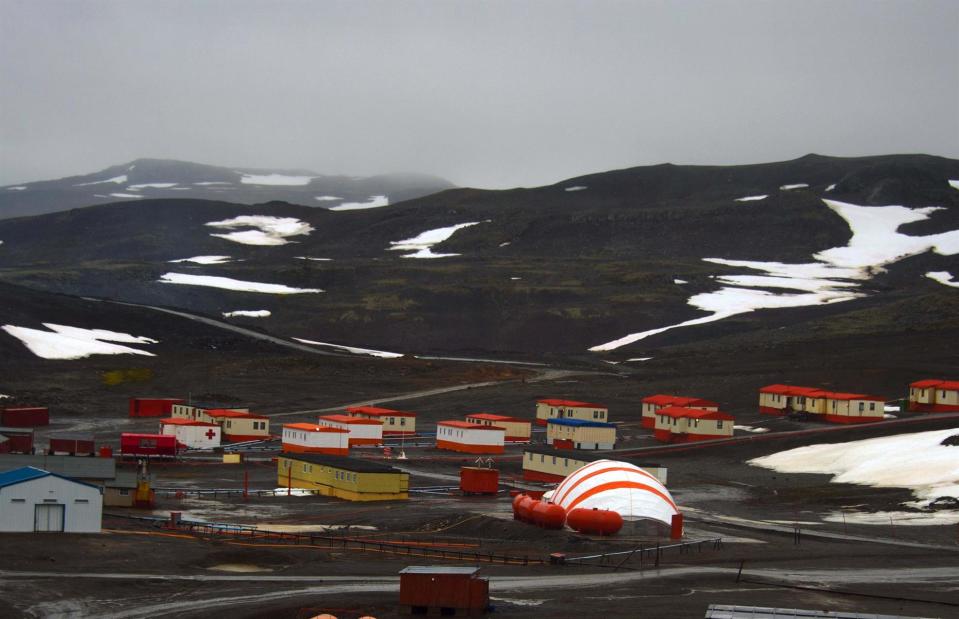
VANDERLEI ALMEIDA / Staff / Getty
Located on the Presidente Eduardo Frei Montalva Base with a population of around 100, which gets smaller in the harsh winter months, the residents tend to be a rotation of scientists or personnel from Chile's navy and air force. Those on long-term stints often bring their families.
Villa Las Estrellas, Antarctica
![<p>Jorge Benavente / Wikimedia Commons [Public Domain]</p>](https://s.yimg.com/ny/api/res/1.2/AXJDmdMtpAlrOcVACdIXlw--/YXBwaWQ9aGlnaGxhbmRlcjt3PTk2MDtoPTYxOQ--/https://media.zenfs.com/en/loveproperty_uk_165/a79ed8a0585294431ba449d43945b8e1)
Jorge Benavente / Wikimedia Commons [Public Domain]
The hospital on the island is equipped for basic lifesaving procedures and a small pharmacy is also available. However, with limited facilities and only one doctor and one nurse, all emergency cases have to be flown to health centres in South America a mere 625 miles away.
Villa Las Estrellas, Antarctica
![<p>Carlos78chile / Wikimedia Commons [CC BY-SA 3.0]</p>](https://s.yimg.com/ny/api/res/1.2/gV5ubzikFKQxSoApSfDIZQ--/YXBwaWQ9aGlnaGxhbmRlcjt3PTk2MDtoPTYxOQ--/https://media.zenfs.com/en/loveproperty_uk_165/f7bc4257d35e3af2583bae99e5ed831b)
Carlos78chile / Wikimedia Commons [CC BY-SA 3.0]
Not only is the town remote, but it also comes with an ultimatum. If you want to live on the island, you must have your appendix removed due to the lack of specialist surgeons who can deal with the procedure. A pretty extreme precaution to have to take! What's more, it's advised not to fall pregnant in the area as it can take days to reach a hospital.
Oymyakon, Russia
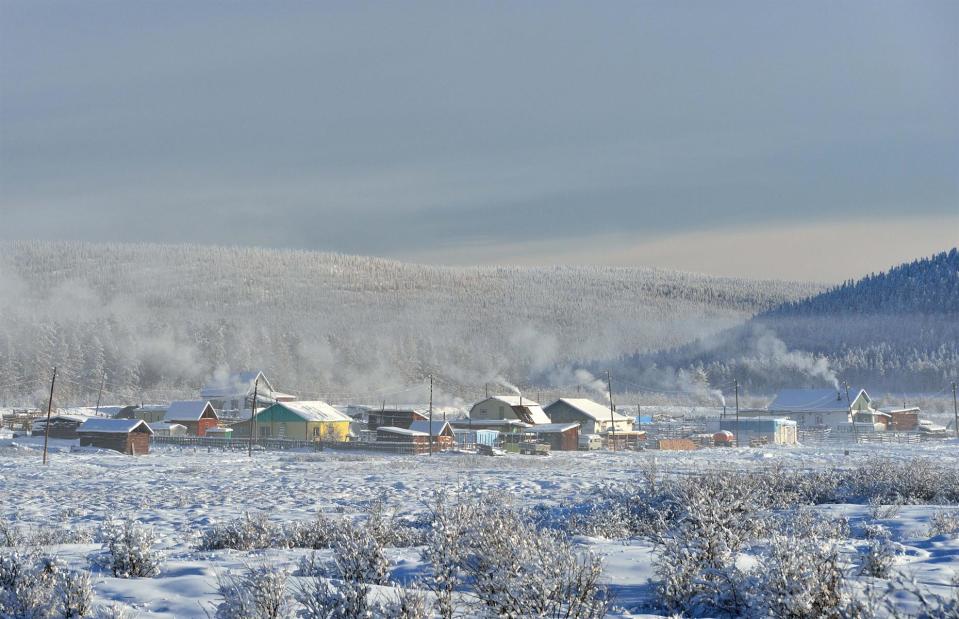
Spiridon Sleptsov / Shutterstock
An almost inhospitable location, the town of Oymyakon in Russia is closer to the Arctic Circle than it is to the nearest city. Frostbite blights the lives of the locals in the isolated village, which has been labelled the coldest permanently inhabited place on Earth.
Oymyakon, Russia
![<p>Ilya Varlamov / Wikimedia Commons [CC BY-SA 4.0]</p>](https://s.yimg.com/ny/api/res/1.2/1jzRiUIAle08nCc3MXIpUw--/YXBwaWQ9aGlnaGxhbmRlcjt3PTk2MDtoPTYxOQ--/https://media.zenfs.com/en/loveproperty_uk_165/7a9c2b54fe1547c7ce6590f4752ca33f)
Ilya Varlamov / Wikimedia Commons [CC BY-SA 4.0]
With winter temperatures averaging -58°C (-72.4°F), pretty much everything is frozen in the village. Engines freeze, meaning many cars are left running all the time and face coverings are a must as eyelashes and even saliva freeze in an instant.
Oymyakon, Russia
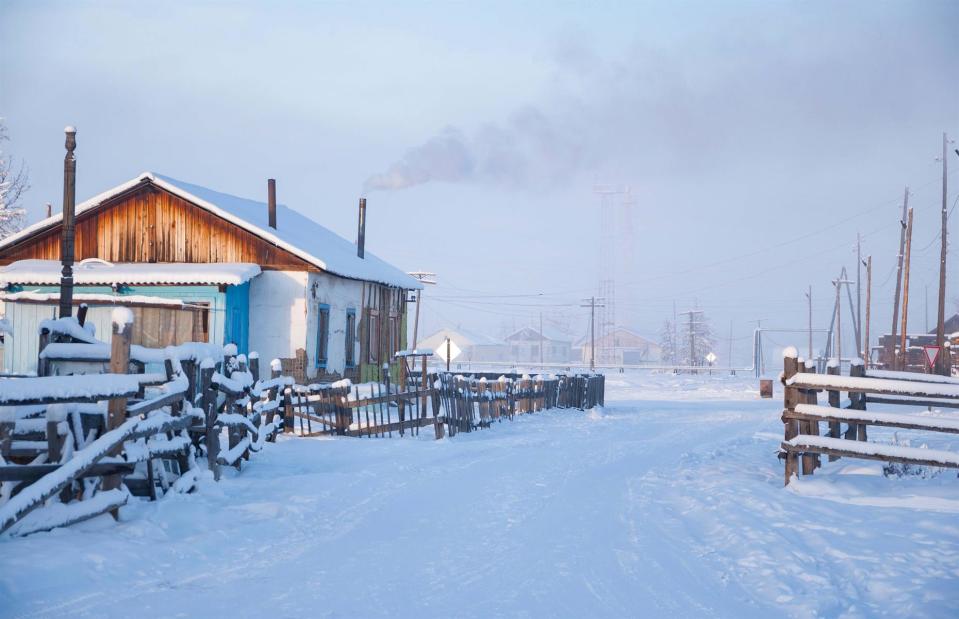
Piu_Piu / Shutterstock
The nearest city is Yakutsk, which is 576 miles away. The constant layer of permafrost makes life hard for the locals and prevents farming as nothing can penetrate the hard ground. The frozen earth also stops the town from having running water, so all toilets are outhouses.
Oymyakon, Russia
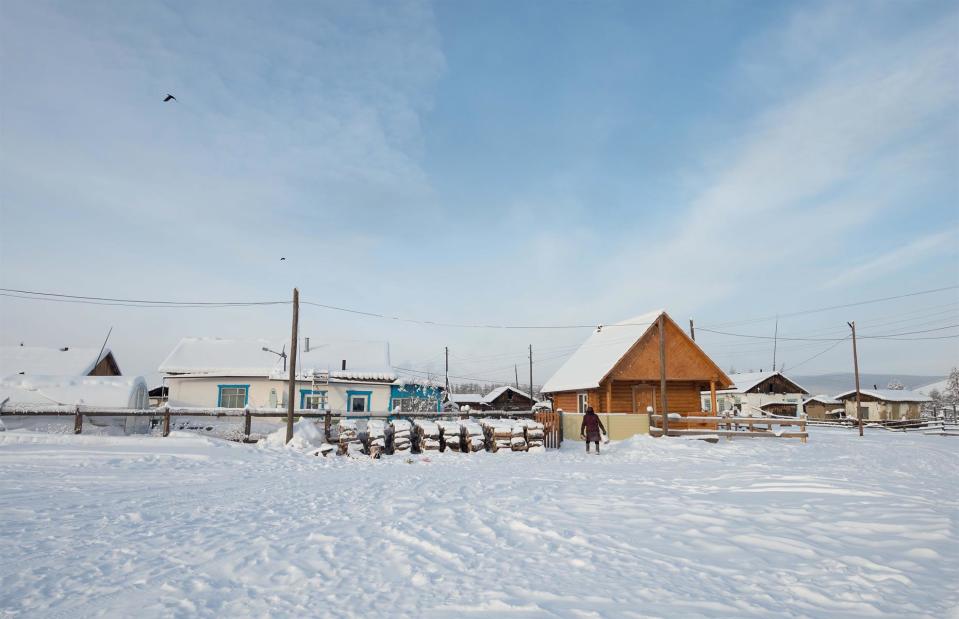
Tatiana Gasich / Shutterstock
Most residents live off high-protein foods including raw frozen fish, reindeer meat and ice cubes of horse blood to get their nutrients. There are no conveniences in town due to the remote location and in the freezing weather, even pen ink freezes.
Ittoqqortoormiit, Greenland
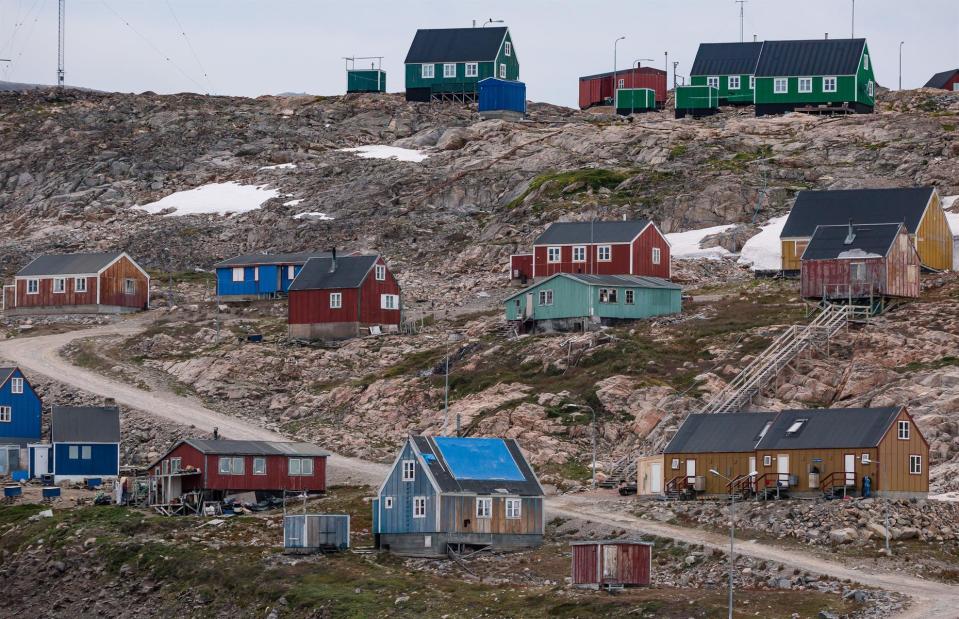
agatha kadar / Shutterstock
The small town of Ittoqqortoormiit in Greenland is the most remote inhabited community in the Western Hemisphere. Its closest neighbour is the Northeast Greenland National Park, the world's largest national park.
Overrun by polar bears, reindeer and walruses, the only human presence in the park is the Sirius Sled Patrol, a Danish naval unit, so residents really are all on their own here.
Ittoqqortoormiit, Greenland
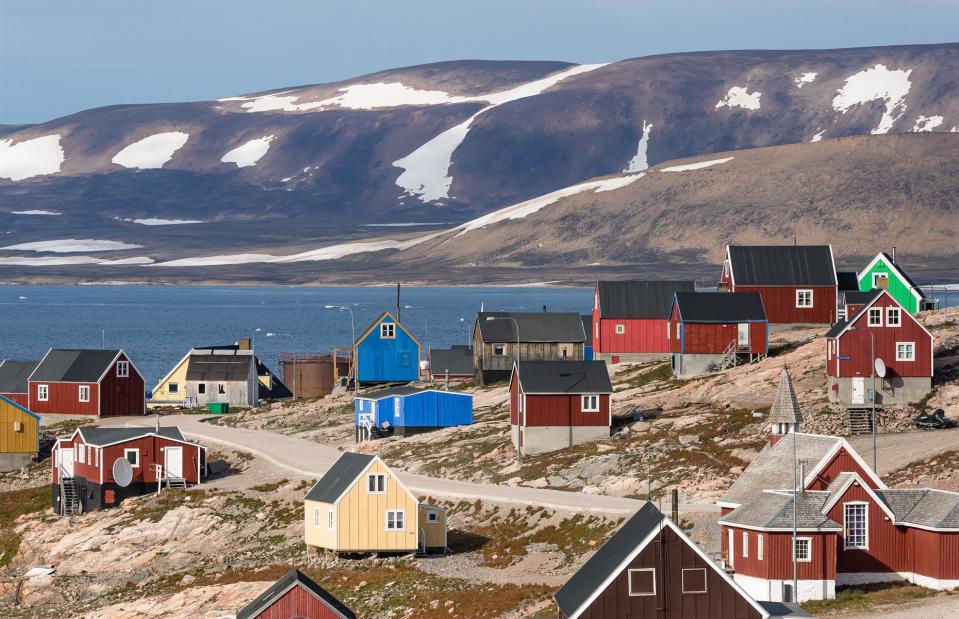
agatha kadar / Shutterstock
The tiny outpost is made up of a scattering of small wooden buildings, painted in bright shades of blue, red, yellow and green. These homes are perched on a coastal bluff made from gneiss, which is one of the oldest types of rock on Earth.
Ittoqqortoormiit, Greenland
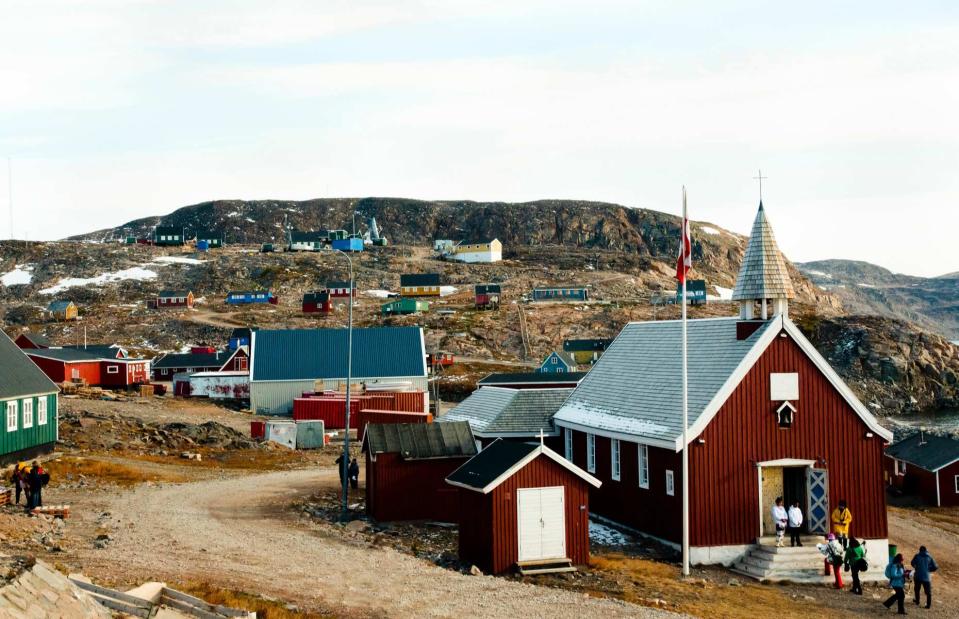
Adwo / Shutterstock
For around nine months of the year, sea ice blocks the town's access to civilisation, meaning hunting and fishing are the only ways the residents can survive. With a small population of just 452 as of 2024, residents in this isolated spot derive an income from hunting and summer tourism. The population briefly swells in August and September when cruise ships arrive with about 3,000 tourists in total.
Ittoqqortoormiit, Greenland
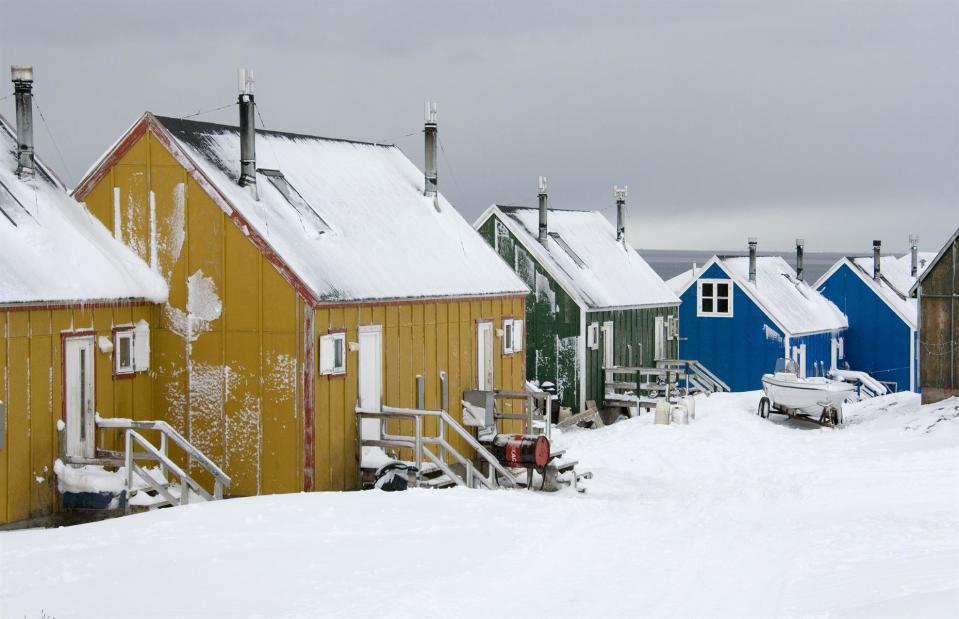
Steve Allen / Shutterstock
Ittoqqortoormiit's inhabitants have access to a local pub that opens just once a week, a supermarket filled with freeze-dried food, plus a small souvenir shop and post office, all located in the centre. To reach the nearest airport, residents have to fly by helicopter or in warmer months, they can take a boat.
Palmerston Island, Cook Islands
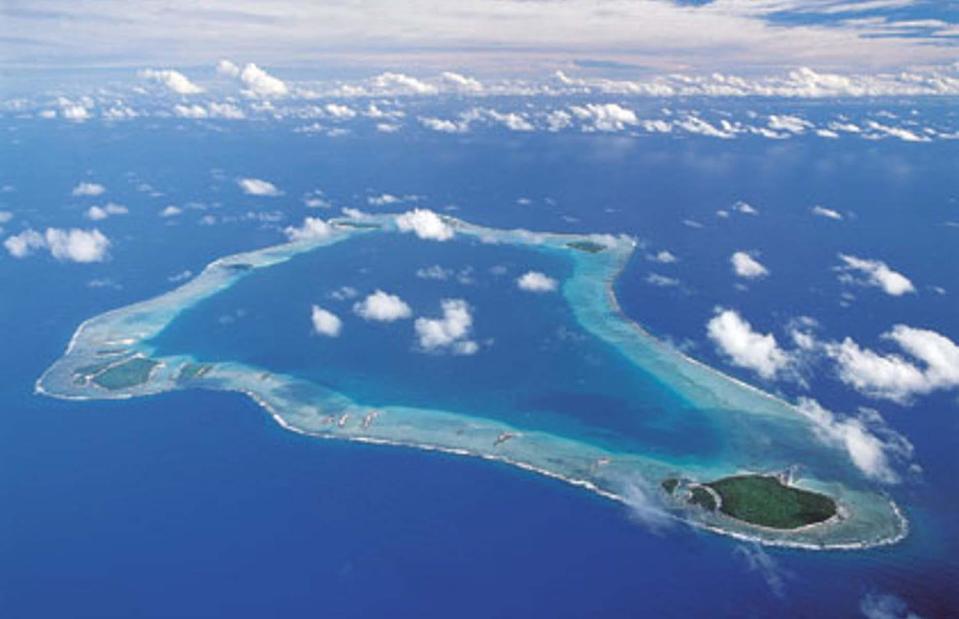
Cook Islands
Around 2,000 miles northeast of New Zealand sits the self-sufficient Pacific island of Palmerston. One of the 15 Cook Islands, the coral atoll has a population of just 25 people, according to the 2021 census, all of whom permanently reside in one of the most isolated communities on the planet.
Palmerston Island, Cook Islands
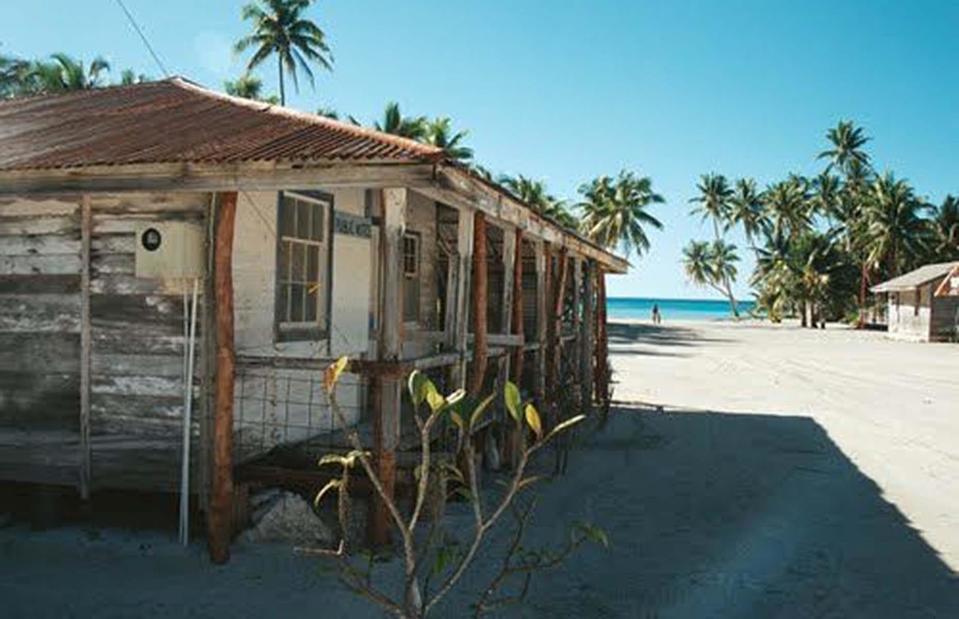
Cook Islands
Even though it may look idyllic, the tiny 640-acre island has no link to the outside world apart from a telephone station for emergencies. Cargo ships only visit a few times a year as without a harbour, access to the island is treacherous.
Palmerston Island, Cook Islands
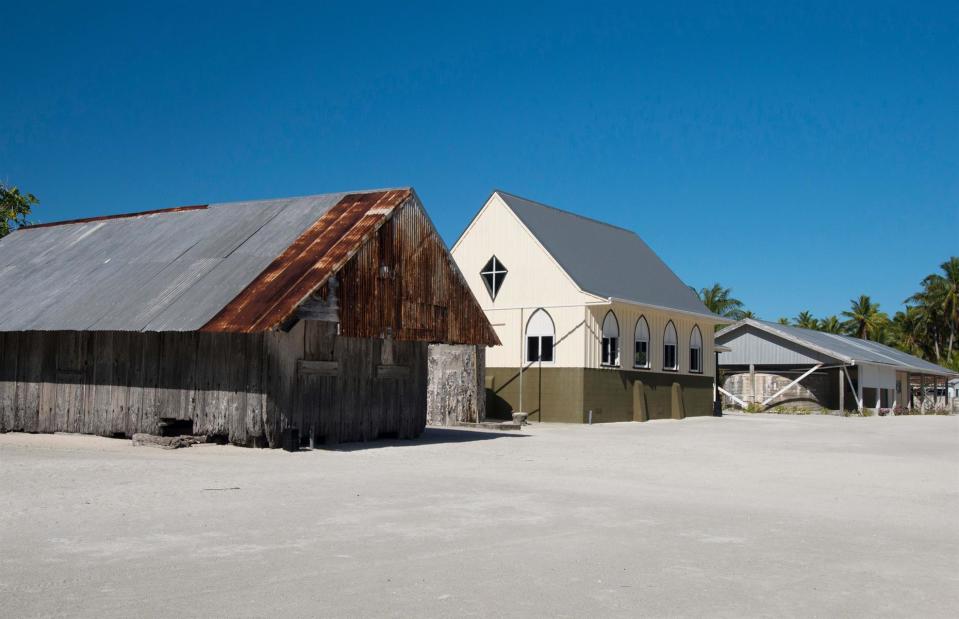
Danita Delmont / Shutterstock
There are just two main dirt tracks on the island, while access to electricity and the internet is available for just a few hours a day. Palmerston Island is so remote, that it wasn't featured on standardised maps until 1969, despite Captain Cook first landing here in 1777.
Palmerston Island, Cook Islands
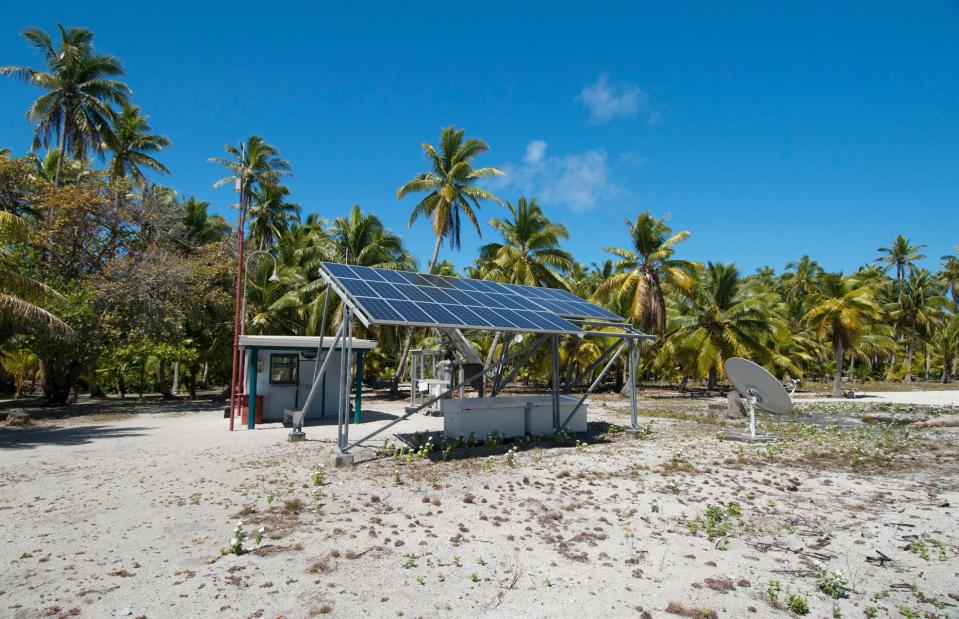
Danita Delmont / Shutterstock
Life on the island is one of isolation and simplicity, with the locals collecting rainwater for drinking and relying on fish, breadfruit and coconuts to get by. The tropical Bosun Bird is also a delicacy on the island. The community is self-reliant due to its fishing, a rainwater catchment system and a solar generator. It is also part of an environmental programme to protect its thriving green turtle population.
Loved this? Explore even more remote homes and incredible off-grid places


